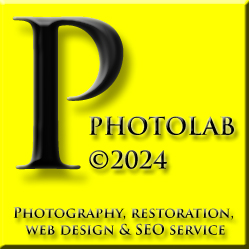Passione fotografica
Sommario
Funzionamento reflex digitali - Requisiti fondamentali - Gli obiettivi - La messa a fuoco - L'esposizione
- Il diaframma e la profondità di campo - Tempi di scatto - regola dei terzi - il colore
- ITA -
Come già spiegato nel precedente capitolo, l'obiettivo è il primo strumento fondamentale per la cattura della luce riflessa sul nostro soggetto paesaggio, monumento, persona ecc ecc.
Un obiettivo è composto da:
- un "innesto a baionetta"; grazie al quale si può inserire correttamente sul nostro corpo macchina,
- una "scala delle aperture"; grazie alla quale possiamo controllare come stiamo utilizzando il diaframma e dunque a quanta luce stiamo permettendo di passare,
- una "ghiera di messa a fuoco"; fondamentale se il nostro autofocus perde colpi in certe situazioni,
- infine un "diaframma"; che è proprio ciò che dovremo governare durante ogni scatto.
I principali obiettivi di cui bisogna tener conto, a seconda di quale tipo di fotografia dobbiamo occuparci sono:
- I "fisheye" con un'angolo di campo di 180° e con una lunghezza focale di 8mm
- Gli "ultragrandangolari" con un'angolo di campo che va da 106° a 92° e una lunghezza focale da 14mm a 21mm
- I "grandangolari" con un'angolo di campo che va da 84° a 62° e una lunghezza focale da 24mm a 35mm
- Gli "obiettivi standard" con un'angolo di campo 46° e una lunghezza focale di 50mm
- I "teleobiettivi" con un'angolo di campo che va da 28° a 8° e una lunghezza focale da 80mm a 300mm
- I "superteleobiettivi" con un'angolo di campo che va da 6° a 2° e una lunghezza focale da 400mm a 1200mm.
Come avrete già capito gli obiettivi ottengono la loro massima performance se usati nel modo giusto e al momento giusto, un esempio?
Beh è molto semplice; pensate sia meglio un grandangolare o un teleobiettivo per quanto riguarda una foto paesaggistica con un forte risalto alla profondita' e all'angolo di campo? A voi la risposta, pensarci costa poco e fa capire non solo quale strumento utilizzare quando si effettua una sessione fotografica, ma anche come spendere al meglio i propri risparmi ponderando al meglio l'utilizzo finale.
Concludiamo con un piccolo concetto, già citato, ma fondamentale; "la lunghezza focale".
E' la distanza in millimetri tra il punto nodale dell'obiettivo, cioè il punto da cui proviene la luce che lo attraversa, e il piano focale, cioè il sensore ccd o cmos, qunado la messa a fuoco è all'infinito.
Dunque è facile capire che a seconda delle dimensioni del nostro sensore, ad esempio nel caso full frame o aps-c, un obiettivo può essere considerato un tele o un grandangolo.
Più precisamente con un esempio possiamo dire che un 50mm montato su un corpo macchina con sensore Aps, dunque full frame, risulterà avere una lunghezza focale esattamente di 50mm. Al contrario lo stesso obiettivo montato su di un corpo macchina con sensore Aps-c avra un fattore di moltiplicazione pari ad "1,5 - 1,6" , dunque risulterà essere un 80mm circa.
- ENG -
As explained in the previous chapter, the goal is the first key tool to capture the reflected light on our subject landscape, monument, person etc etc.
A lens is composed of:
- A "bayonet"; thanks to which it can correctly insert on our machine body,
- An "aperture scale"; thanks to which we can control how we are using the diaphragm and therefore how much light we are allowing to pass,
- A "ring of focus"; essential if our autofocus misfires in certain situations,
- Finally, a "diaphragm"; that is what we will have to govern during each shot.
The main objectives to be taken into account, depending on which type of photography we need to address are:
- The "fisheye" with an angle of view of 180 ° and with a focal length of 8mm
- The "ultra-wide" with an angle of the range of from 106 ° to 92 ° and a focal length from 14mm to 21mm
- The "wide-angle" with an angle of the range of from 84 ° to 62 ° and a focal length from 24mm to 35mm
- The "objective standard" with an angle of 46 ° field and a focal length of 50mm
- The "telephoto" with an angle of the range of from 28 ° to 8 ° and a focal length from 80mm to 300mm
- The "superteleobjectives" with an angle of the range from 6 ° to 2 ° and a focal length from 400mm to 1200mm.
As you may have already figured out the goals they get their maximum performance when used in the right way and at the right time, an example?
Well it's very simple; think is a better wide angle or telephoto regarding a photo landscape with a strong emphasis on the depth 'and the corner of the field? To you the answer, think about it is cheap and does not only understand which tool to use when making a photo session, but also how to best spend their savings pondering the best end use.
We conclude with a small concept, already mentioned, but fundamental; "focal length".
Is the distance in millimeters between the nodal point of the lens, ie, the point from which the light passing through it, and the focal plane, ie the sensor ccd or cmos, qunado focus is infinity.
So it is easy to understand that depending on the size of our sensor, for example in the case full frame or aps-c, a target can be considered a tele or wide.
More precisely with an example we can say that a 50mm mounted on a camera body with APS sensor, full frame, therefore, will be to have a focal length of just 50mm. On the contrary the same lens mounted on a camera body with sensor APS-c will have a multiplication factor equal to "1.5 to 1.6", therefore prove to be an approximately 80mm.









